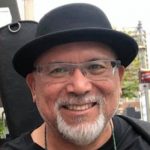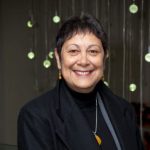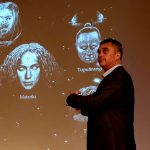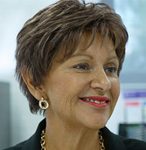Summary
Western science… believed man could force nature to reveal its secrets; the Sioux simply petitioned nature for friendship (Sioux scholar and activist, Vine Deloria, Jr.).
The greatest impediment to knowing and apprehending truth since the European Enlightenment, is science’s delusion of being the only legitimate mode of rigorous and methodical inquiry.
Science has become normalised and synonymous with concepts such as truth and objectivity, yet western scientific method reflects only one knowledge system, which has gained celebrity and prominence not because it is more truthful but because of global power imbalances effected by colonialism.
In conversation with prominent Aboriginal, Māori and Pacific scholars, this discussion begins with the starting point that the validity of Indigenous scientific knowledge comes from hundreds and thousands of years of engaging physically and metaphysically with the earth, cosmos and ocean. Indigenous science is unequivocally spiritual, personal, visionary, pragmatic, rigorous and, consequently, has underpinned millennia of Indigenous prosperity and survivance.
Reading the Earth is presented with The University of Queensland
FEATURING

Vicente Diaz
Vicente Diaz
Prof. Vicente M. Diaz (Pohnpeian) chairs the Dept of American Indian Studies at University of Minnesota, where he also directs the Native Canoe Program. Diaz specializes in Indigenous canoe culture...
View Profile
Aileen Moreton-Robinson
Aileen Moreton-Robinson
Distinguished Professor Aileen Moreton-Robinson is a Goenpul woman from Minjerribah (Stradbroke Island), Quandamooka First Nation (Moreton Bay) in Queensland, Australia. Professor Moreton-Robinson has researched and published in anthologies and journals...
View Profile
Rangi Matamua
Rangi Matamua
Professor Rangi Matamua, of Tūhoe travels throughout the country giving public lectures about Matariki and Māori Astronomy to a number of eager audiences. He is also a star gazer by...
View Profile
Bronwyn Fredericks
Bronwyn Fredericks
Professor Bronwyn Fredericks has over 30 years of experience working in and with the tertiary sector, State and Federal Governments, and Aboriginal and Torres Strait Islander community-based organisations. As Pro-Vice-Chancellor...
View ProfileMore Information
Accessibility
For tips on optimal livestream and on-demand video viewing, and how to access Live Captions on your Chrome browser, please visit the Accessibility page.
To discuss your access requirements and to book any access services for performances, please call QTIX on 136 246. Want to plan your visit? Learn More
SUPPORTING LEARNING RESOURCES

In this activity, students explore what happens to a beam of light when it passes through transparent materials, and how refraction can affect the appearance of objects.
Contains curriculum links to:
Years 5, 9
Physics, Technology, Aboriginal and Torres Strait Islander Culture

This little basket was made by a woman in 1897. Her name was Kalmakuta and she was from the Joondoburri people of Bribie Island – Pumicestone Passage area.




Cost
Free to stream on-demand now

